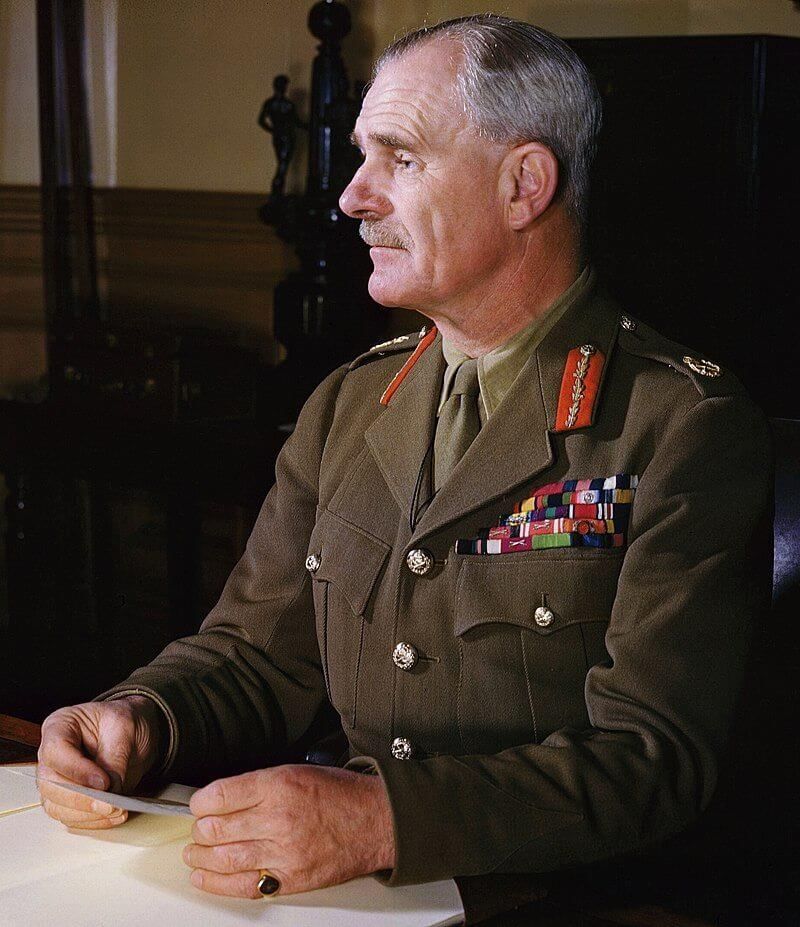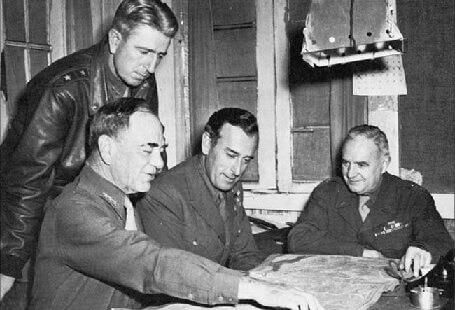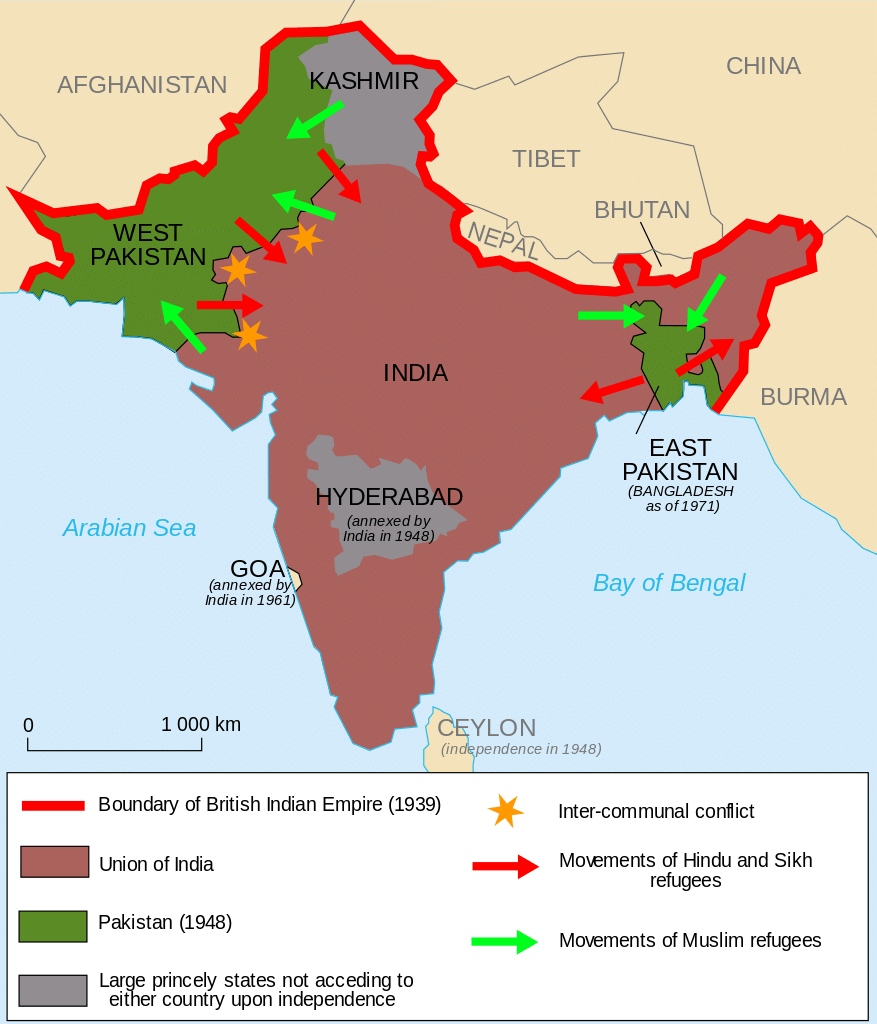Historical Development of the Constitution of India- 2 | General Awareness & Knowledge - DSSSB TGT/PGT/PRT PDF Download
CRIPPS MISSION
Within the next two years, however, a dramatic change in the British attitude had taken place. This was due to two reasons.
(i) The British forces had suffered disastrous defeats in different theatres of War
(ii) The international situation became so unfavourable to Britain, with Japan almost at the doorstep of the Indian empire, that she had to seek the support of the popular forces in India.
 Cripps and Mahatma Gandhi during the Second World War
Cripps and Mahatma Gandhi during the Second World War
The Cripps Mission wanted the Indian leaders to support and work wholeheartedly for the prosecution of the War and envisaged complete transfer of power to Indians after the War.
Negotiations, however, failed. The Indian National Congress demanded complete Indianisation of the Governor General's Executive Council. But the British rulers were not prepared to surrender the portfolio of Defence to the Indians. Gandhiji called the proposals as a postdated cheque.
1. Cripps Mission
2. Montague Chelmsford Report
3. Simon Commission
4. Minto-Morley Reforms
Quit India Resolution
The failure of the Cripps Mission led to acute discontent in India. It exposed the intentions of the British rulers.
On August 8, 1942, the All India Congress Committee passed the famous "Quit India" resolution for the immediate ending of the British rule and sanctioned "the starting of a mass struggle on nonviolent lines on the widest possible scale."
It was Gandhiji who piloted the resolution in the Congress Committee.
Wavell Plan
Another abortive effort to solve the political deadlock in Indian was made in 1945. Lord Wavell invited the leaders of all sections of political opinion. A conference was held at Shimla. The Wavel plan in its essence was the complete Indianisation of the Executive Council. The caste Hindus and Muslims were to be represented on the basis of parity. Sir Archibald Wavell
Sir Archibald Wavell
The Congress, being a national organisation, insisted on the nomination of its representatives from all the communities. The conference met with failure because neither the Congress nor the League was prepared to deviate from the stand taken by them.
Cabinet Mission Plan
- The Labour Party which came to power after World War II, wanted to transfer power to the Indians as a matter of political expediency.
- A mission consisting of three Cabinet Ministers of the British government–Sir Stafford Cripps, Lord Penthic Lawrence and A.V. Alexander– was, therefore, sent to India to resolve the political deadlock. They announced their plan regarding the future political set up of India, known as the Cabinet Mission Plan.
- The plan rejected the demand of the All India Muslim League for partition of the country and establishment of a fully sovereign Pakistan. It envisaged a confederation consisting of three groups of autonomous states vesting the powers of three departments– Defence, External Affairs and Communications– in a Central government and all the remaining powers with the groups themselves.
- Each of the groups was free to have a separate constitution of its own choice, thus giving ample scope for both the leading religious groups– Hindus and Muslims– to enjoy complete autonomy in areas where they were in a majority. Question for Historical Development of the Constitution of India- 2Try yourself:Which British Ministers were a part of the Cabinet Mission?View Solution
- The plan had two parts, namely, a long-term programme and a short-term one. While the former was concerned with the future political setup on a permanent basis, the latter was intended to establish an immediate Indian government.
- The Muslim League accepted both parts of the plan while the Indian National Congress decided that it would unreservedly accept only the long-term programme. As a result, the Muslim League later on rejected the plan as a whole and declared that it would resort to direct action to achieve its own demands.
- Meanwhile, elections in the British Indian provinces were completed and the provincial autonomy scheme of the Constitution Act of 1935 was given effect to by forming popular ministries in all provinces. But the question of forming an interim cabinet at the Centre still remained unresolved.
- As a temporary measure, a caretaker government of senior civil service officials was formed by the Governor-General towards the end of June 1946.
After the elections to the Central and provincial legislatures and the Constituent Assembly in June 1946 Lord Wavell invited Jawaharlal Nehru in August 1946 to consider proposals for the formation of an interim government at the Centre. - An interim government was formed on September 2, 1946. The Muslim League at first refused to join it but later on, it did so. It, however, continued to boycott the Constituent Assembly.
- A ticklish situation was created due to the Muslim League's participation in the interim government and non-participation in the Constituent Assembly. An attempt to establish the practice of collective responsibility in the interim government failed on account of the hostile attitude of the Muslim League.
- Ultimately, the Muslim League withdrew from the interim government and demanded the dissolution of the Constituent Assembly of India on the ground that it was not fully representing all sections of the Indian people.
- It was on February 20, 1947 that British Prime Minister Clement Attlee announced that the British government was determined to transfer power to responsible Indian hands and fixed June 1948 as the final date for the purpose. If within that period Indian leaders fail to produce an agreed solution, the Britishers would not stay in after that date and would hand over power to one or more than one government.
- For the purpose of taking necessary steps for transfer of power, the British Government thought that Lord Wavell was not fit and, therefore, the appointment of Lord Wavell was terminated and Lord Louis Mountbatten as appointed to succeed him was the Governor-General.Question for Historical Development of the Constitution of India- 2Try yourself:What did the Cabinet Mission Plan envisaged for India?View Solution
Mountbatten Plan
 Lord Mountbatten while proposing his plan
Lord Mountbatten while proposing his plan
- On February 20, 1947, the British government made a historic announcement declaring its intention to transfer power to responsible Indian hands not later than June 1948. Lord Mountbatten, immediately after assumption of office, plunged himself into prolonged negotiations with party leaders.
- With a view to facilitating this transfer, and at the same time to accommodate the rival claims of the two leading communities, he devised the plan of partition of the country into India and Pakistan. Creation of Pakistan was assented to by both the parties and on June 25, 1947, Lord Mountbatten made the announcement of the agreed plan.
- According to this plan, Punjab and the Bengal provinces were partitioned between the two new nations. People of the NWFP and the Sylhet district of Assam were given the right to decide through plebiscite whether they wished to join Pakistan or India. Boundary Commissions were to be set up for partitioning the provinces concerned.
- The old Constituent Assembly minus the Muslim League members was to carry on its work of framing the Constitution of India, and Pakistan was to have a separate Constituent Assembly. August 15, 1947 instead of June 1948, was fixed as the final date for transfer of power.Question for Historical Development of the Constitution of India- 2Try yourself:Indian Council Act 1909 is also called as?View SolutionQuestion for Historical Development of the Constitution of India- 2Try yourself:“The Constitution should give Indian a Dominion Status”, was a proposal in which plan?View Solution
Indian Independence Act, 1947
As a result of the acceptance of the Mountbatten plan, the Indian Independence Act, 1947 was passed by the British Parliament on July 18, 1947. The main provisions of this Act are as follows:
(i) New dominions– The Act set up two dominions– India and Pakistan– from August 1947. Article 2 of the Act determined the territories of the two Dominions.
The Pakistan Dominion was to consist of Baluchistan, Sindh, West Punjab, N.W.F.P., and East Bengal, including the Sylhet district of Assam. The remaining
parts of British India were to constitute the Indian Dominion.
 India and Pakistan at the time independence (Indian independence act, 1947) Note that the territory of the two States was significantly altered by the accession of the Princely States
India and Pakistan at the time independence (Indian independence act, 1947) Note that the territory of the two States was significantly altered by the accession of the Princely States
The fate of N.W.F.P., whether it was to join Pakistan or not, was to be decided by a referendum before August 15, 1947. Similarly, a referendum was to
be held in the Sylhet district of Assam.
(ii) Governor-General– The Act provided that for each Dominion, "there shall be a Governor-General to be appointed by His Majesty for the purpose of the governance of the Dominion." The same person, unless the Legislature of each of these Dominions passed a law otherwise, could be a Governor-General of both the Dominions.
(iii) Legislatures– Until a new Constitution was framed for each Dominion, the Act made the existing Constituent Assemblies the Dominion legislatures for the time being. The Dominion legislatures were given full powers to make laws for their Dominions.
(iv) Temporary Provisions as to the Government of each Dominion– The Constituent Assembly of each Dominion was to act as Legislature of that Dominion. It was also to exercise powers for framing the Constitution of the Dominion.
Except in so far as the Constituent Assembly enacted laws, each dominion was to be governed so far as possible in accordance with the Government of India Act, 1935. However, discretionary and individual judgement powers of the Governor-General and Governors under that Act were to lapse.
(v) Indian States– The sovereignty of the British Crown over the Indian States lapsed with effect from August 15, 1947. Along with this, the treaties and agreements between his Majesty and the Indian States also lapsed. The States thus became sovereign entities. The States were given the freedom, if they so wished, to join India or Pakistan, or to remain as independent entities.
(vi) Tribal Areas– As in the case of Indian States, the treaties and agreements between His Majesty and any person having authority in the tribal areas lapsed; and so did the obligations, rights and functions of His Majesty under such agreements and treaties.
(vii) Abolition of the Office of Secretary of State for India– The office of the Secretary of State for India and his advisory board were abolished and instead the Secretary of Commonwealth Relations was to handle matters between the dominions and Great Britain.
(viii) British Monarch was no longer Emperor of India– The title Emperor of India was deleted from the Royal style of the British Monarch.
(ix) Miscellaneous– The other provisions of the Act dealt with the Civil Services, the Armed Forces, the British Forces in India, etc. The rights and privileges of the Civil Services were protected. Provision was made for division of Armed Forces and retention of the authority and jurisdiction of His Majesty over the British Forces stationed on the territories of India and Pakistan.
Parliamentary Terms
- Question Hour- The day’s business normally begins with the Question Hour during which questions asked by the members are answered by the Ministers.
- Starred Question is one for which an oral answer is required to be given by the Minister on the floor of the House. Supplementary questions may be asked based on the Minister’s reply. The Speaker decides if a question should be answered orally or otherwise. One member can ask only one starred question on a day.
- Unstarred Question is one for which the Minister lays on the table a written answer. A 10-day notice has to be given to ask such questions and no supplementary questions can be asked with regard to such questions.
- Short Notice Question can be asked by members on matters of public importance of an urgent nature. It is for the Speaker to decide whether the matter is of urgent nature or not. The member has also to state reasons for asking the question while serving notice.
- Zero Hour- This period follows the Question Hour and it generally begins at noon. Usually the time is used by members to raise various issues for discussion.
- Cut Motions- A motion that seeks reduction in the amount of a demand presented by the government is known as a cut motion. Such motions are admitted at the Speaker’s discretion. It is a device through which members can draw the attention of the government to a specific grievance or problem.
- Calling Attention Motion- A member may, with prior permission of the Speaker, call the attention of a Minister to any matter of urgent public importance and the Minister may make a brief statement regarding the matter or ask for time to make a statement. Question for Historical Development of the Constitution of India- 2Try yourself:When was the Interim Government, headed by Pt. Jawaharlal Nehru formed?View Solution
|
240 videos|355 docs|31 tests
|
FAQs on Historical Development of the Constitution of India- 2 - General Awareness & Knowledge - DSSSB TGT/PGT/PRT
| 1. What is the historical background of the Constitution of India? |  |
| 2. Who were the prominent figures involved in the development of the Constitution of India? |  |
| 3. How long did it take to draft the Constitution of India? |  |
| 4. What were the key influences on the Constitution of India? |  |
| 5. How does the Constitution of India reflect the aspirations of the Indian people? |  |

















